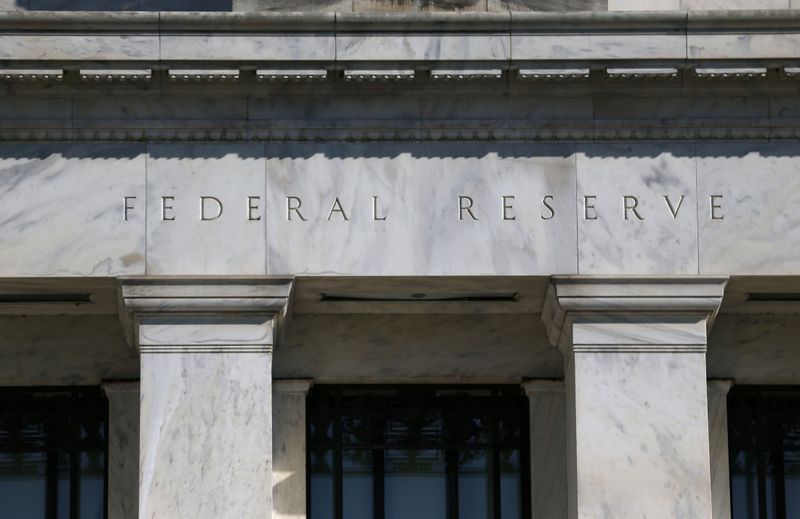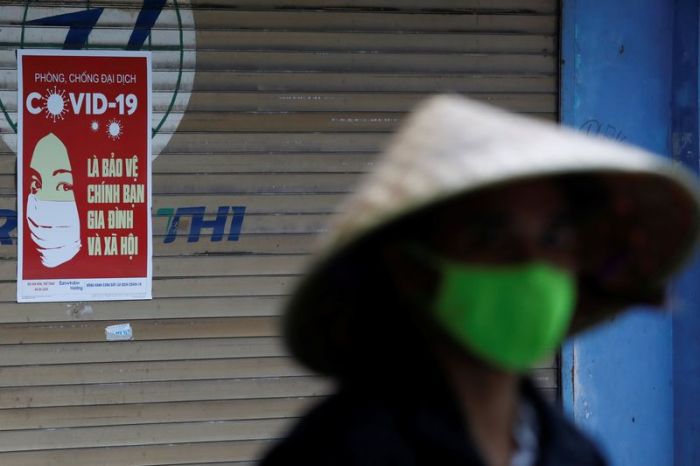WASHINGTON (Reuters) – U.S. companies have been battered by the fallout from the novel coronavirus outbreak, with economic activity plunging at an unprecedented speed over the past few weeks, a Federal Reserve report released on Wednesday showed.
The sharp deterioration in the U.S. central bank’s latest temperature check of businesses across its 12 districts illustrated the abrupt ferocity of the disruption caused by the pandemic, which has likely seen the economy decline in the first quarter at its quickest pace in decades.
Economic activity “contracted sharply and abruptly across all regions,” the Fed said, dispensing with its usual understated caution when describing changes in conditions. Instead, the pages of the “Beige Book” report were peppered with starkly bleak language as many firms reported layoffs and stunted output. (For a graphic, see: https://tmsnrt.rs/3bcfRFh)
The Fed’s survey was completed mostly in March but included some of the first week of April. During that time, the United States went from worrying about the risks posed by the virus to most of the country being under some form of stay-at-home order and millions losing their jobs at breakneck speed.
“The hardest-hit industries – because of social distancing measures and mandated closures – were leisure and hospitality, and retail aside from essential goods,” the Fed said in the report in which the virus or COVID-19, the respiratory disease caused by the coronavirus, were mentioned 93 times.
“All districts reported highly uncertain outlooks among business contacts, with most expecting conditions to worsen in the next several months,” the Fed said.
The central bank has taken unprecedented action since early March to try and keep credit flowing to businesses and households by shoring up liquidity in financial markets. It has launched numerous crisis-fighting programs, slashed interest rates to near zero and is resuming large-scale asset purchases.
Last week it announced a “Main Street” program that would make up to $600 billion in loans available to mostly mid-sized companies, though Fed Vice Chair Randal Quarles said on Friday it would be another two to three weeks until it was up and running.
The U.S. government also has a $349 billion forgivable loan program for small businesses, but it has been hampered by a slow disbursement of funds since it was launched almost two weeks ago. Data released on Tuesday showed that the construction, professional services and manufacturing sectors so far are among those topping the list of recipients.
NO SECTOR SPARED
Districts across the country reported a severe and broad impact from the outbreak, the Fed said in its report, pointing to the all-encompassing nature of the effects of an intentional shutdown of large parts of the world’s largest economy that cannot be done from home to slow the spread of the virus.
“No sector was spared,” the Philadelphia Fed said. “Rapidly rising joblessness has not made hiring easier, as contagion fears and child care needs keep workers at home. Prices tend to be falling, but the wage path is muddled, and firm outlooks are clouded by uncertainty.”
In the Cleveland Fed’s district, multiple firms in professional and business services reported clients had delayed the implementation of new projects and canceled some underway, while the San Francisco Fed said there was a freeze on television and film production resulting in widespread layoffs in the entertainment sector.
The Richmond Fed said hotels and hospitality contacts reported workforce reductions of around 90% of staff.
The increasing pain felt by U.S. firms is being closely watched by Fed policymakers and economists as they try to forecast how quick the economic rebound will be once social distancing controls are lifted and businesses can reopen.
Chief among their concerns is whether there is a prolonged period during which firms scale back investment and hiring to deal with debt burdens. There are also worries that consumer demand will remain punctured due to fears of a possible resurgence in coronavirus cases once restrictions are eased.
U.S. retail sales suffered a record drop in March and output at factories declined by the most since 1946, data released earlier on Wednesday showed. Consumer spending accounts for more than two-thirds of U.S. economic activity.
The global economy is expected to shrink by 3.0% during 2020, the steepest downturn since the Great Depression of the 1930s, the International Monetary Fund said on Tuesday.
(Reporting by Lindsay Dunsmuir; Additional reporting by Ann Saphir in San Francisco; Editing by Andrea Ricci and Paul Simao)


























